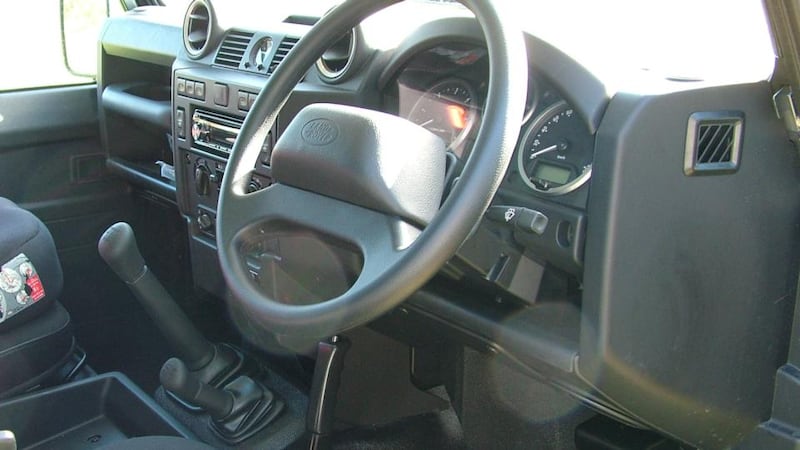If they've put up a special museum exhibit all about you, it probably means you're old now. I wonder if that's how the late, great Nelson Mandela felt, travelling the globe and seeing tribute after tribute to him and his life's work. Did it make him feel good? Or did he just think "crikey, they must be expecting me to pop off any day now…"
Perhaps that's how the Land Rover Defender feels now. It's been in production, sort of, since 1948 and now Land Rover has setup a special museum-style exhibit right in the midst of the Solihull factory where both car and brand were born 67 years ago. The exhibit allows visitors to see how the original Series I Land Rovers were built back then – made of war surplus aluminium and square in shape because it was both easy to press the panels like that and because you could stack them in crates more easily for those vital export dollars.
Presumably, then, the current Defender is looking across at this exhibit from its modern-day production line, thinking “crikey, they must be expecting me to pop off any day now…” And it would be right. The Defender as we know it is not much longer for this world. 2015 will be the last year of European production and sales for the venerable original Land Rover as emissions and safety legislation will finally make it impossible to sell.


The Defender will continue, though. Production has already been earmarked for India, home of Land Rover's munificent owners, Tata. Sales will continue in those markets where safety and emissions legislation is, shall we say, a touch more elastic than it is around these parts. But for us, the Defender will die, seven decades on from when it was first built.
Can you really trace the current Defender right the way back to that 1948 original? Yes, just about. True – the Defender as it is today really dates from the late 1970s, when Land Rover gave the Series III a massive update to bring it roaring into the eighties. But it is still essentially a development of that Series III, which was begat from the Series II and you can fill the the rest. Two components from the current car are actually physically interchangeable with the original – a sump drain plug from the oily depths of the engine and a tiny aluminium cleat that comes with models sporting a canvas roof section. Small items they may be, but time travellers in their own way.
With this being the last opportunity to do so, I eagerly grabbed the key to a 151-plate Defender to bring it for one last spin. I make no bones about it; the Defender has always been one of my most favourite cars, and I shall miss it terribly.
That does not mean I’m blind to its myriad faults and foibles though. As soon as you heft yourself aboard, through that narrow door opening, you start to see the cracks and chips in the rose-tint. The driving position is cramped and offset, and the handbrake, mounted down and to the left, constantly nibbles at your left calf. The steering wheel is vast, but you cant actually move it properly because your right elbow is jammed against the door, so you have to shuffle it, police standards roadbook-style.
Then you twist the key, clockwise and towards you which still feels odd and the noise arrives. The engine is actually modern 2.2-litre unit, bought in from Ford and shared with the old Transit but it makes a vast, unexpurgated noise redolent of a steel works or a heavy-production mine shaft. It clatters, rattles and roars all to little avail when it comes to performance. The Defender's relatively trim kerb weight (all those aluminium panels keep it down to just over two-tonnes) means that step-off performance is actually quite brisk but it's leisurely after that and at motorway speeds, it's very, very noisy. Earplug noisy. The ringing in your ears will last through dinner.
Motorway? Oh yes, did I mention that I had planned an epic amount of mileage? Belfast-Waterford-Dublin-Waterford-Belfast, over the course of four days. By the end I was deaf, my left leg had developed a cramping twitch and my wallet was sucked dry by the 25mpg thirst.
I should have hated it. I should know better, and I should stand here and tell you that we’ll be well rid of it, and welcome instead the next-generation Defender which is due to arrive in 2018 and which will use the chassis of the current Discovery to be equally rugged, but far more refined.
I can’t though. It’s just too damned charming, with that big, friendly cliff-face styling and the loping, bouncy ride quality that makes it seem more and more like a motorised labrador. Same damp, musty smell after you’ve been down the fields with it too.
And that’s the real catch. Rattly and noisy it may be but the Defender took my brood and I from one end of this country to the other in at least tolerable discomfort. When it arrived, I used it to help my father-in-law with a little household task; pulling four felled trees out of a forest and up a slippery grass slope. The Defender was then re-loaded, this time with bags, an armchair and a roll of carpet and headed back out up the motorway to home. Few, if indeed any, other cars could have done all that in one go.
And therein lies the point. Defenders are not cars, hence you can’t judge their refinement and comfort by the same yardstick. They are working vehicles, designed for a life on the farm, on the building site or in the armed forces and are only granted just sufficient on-road manners to allow them to carry out multiple roles. For a Defender buyer (more likely to be a utility company than a private individual these days) it’s more important that the hefty separate chassis can be stripped down and built up with a variety of different bodies, from the station wagon I drove to a cherry-picker, Luton-top van or even a mobile cinema. Whatever form the Defender’s successor finally takes, it will have some massive automotive shoes to fill. After all, the old tale of the Land Rover being the first car that many remote populations of humans ever saw is actually true, even if Japanese reliability edged it out of those National Geographic markets in the eighties and nineties.
So it's not a car, it's an icon. As important to modern motoring history as the Model T, Beetle, 911, Mini and 250 GTO. As recognisable a silhouette as the Nike swoosh or the McDonald's arches. As capable and versatile as a Swiss army knife and a Swiss army knife can't tow a tree up a slope.
It’s demise is in so many ways overdue, but I still think it deserves to be mourned as it goes, and remembered for what it does best. And what it does best, it still does better than any other vehicle out there.
Can someone pass me a Q-Tip? I really need to sort out this noise in my ears...


















